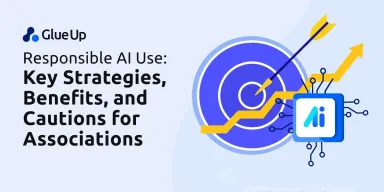![Top 10 Digital Transformation Technologies for Member-based Organizations for 2022 and Beyond [with Examples] Top 10 Digital Transformation Technologies for Member-based Organizations for 2022 and Beyond [with Examples]](/sites/default/files/image_1617.png)
The right digitalization technology can make your business reach new heights, while the wrong one can cripple it.
It is evident from the studies that show that digital transformation costs around 1.78 trillion dollars worldwide, but 70% of the attempts fail because of flawed strategies and technologies. This also indicates that businesses assume that all technologies apply to all kinds of businesses which isn't the case. Technology adoption essentially depends on a business's needs, customer base, and industry trends.
To address this, we have compiled a list of successful digital transformation technologies that are ideal for membership-based organizations in this article. We have also highlighted two successful digitalization stories that used the appropriate technology according to their business needs.
Quick Reads
- What is Digital Transformation?
- Top 10 Digital Transformation Technologies for Member-Based Organizations
- Examples of Successful Digital Transformation in Member-Based Organizations
- FAQs
What is Digital Transformation?
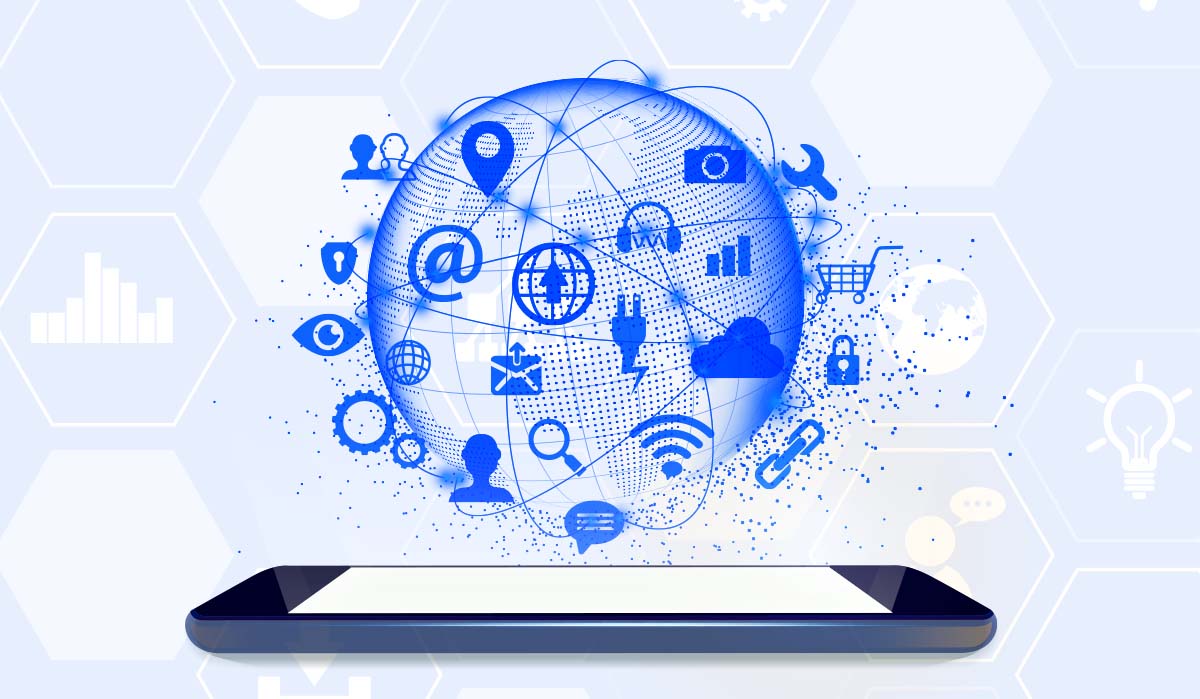
Digital transformation or digitalization is the process of integrating digital solutions in business processes to provide value to their customers and become more competitive. It is different from digitization (the use of digital technologies in business) as it demands innovation and culture change for a massive transformation of the organization.
There are two main focus areas for achieving digital transformation:
- Providing value
- Cultural change
The use of cutting-edge technologies without delivering value to customers only leads to financial and strategic losses. Similarly, a true transformation cannot be accomplished without challenging the status quo and getting comfortable with failures.
Top 10 Digital Transformation Technologies for Member-Based Organizations
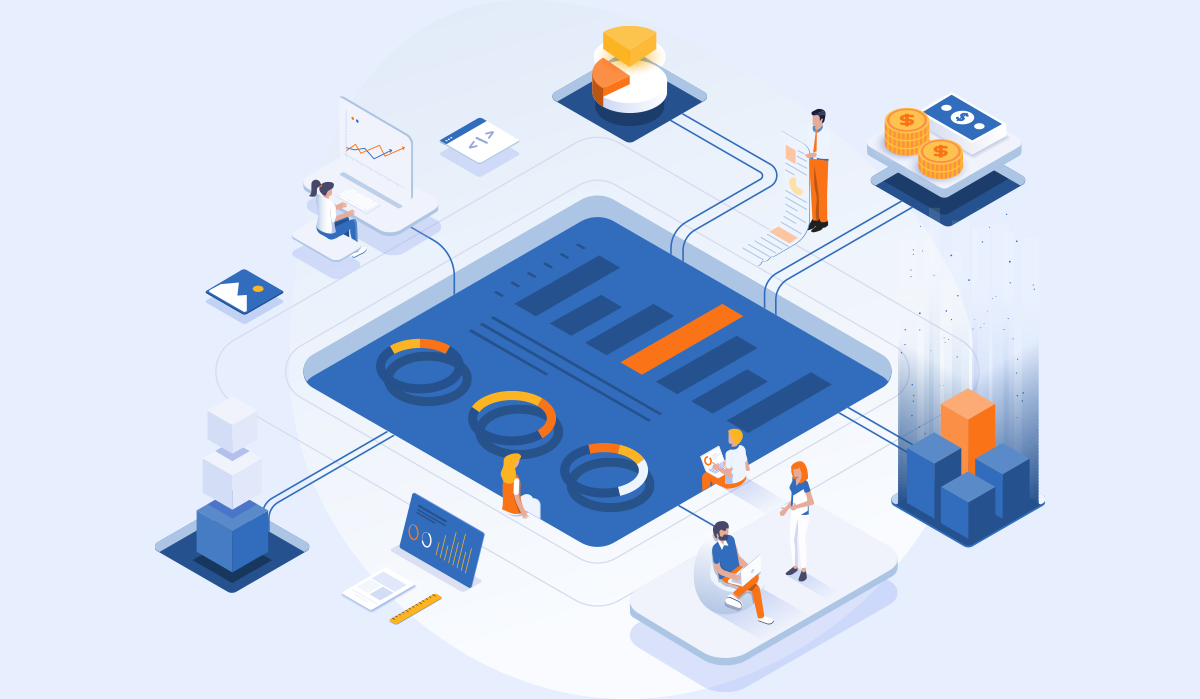
Digital transformation (DX) is the process of integrating technology into every aspect of an organization. It's about leveraging technology to improve operations, leading to faster processes, reduced waste and cost, improved decision-making, and better member or customer experiences.
Let’s take a look at the ten best technologies that can help member-based organizations accelerate digital transformation.
1. Mobile Technology
Mobile Technology is a fundamental element to drive digital transformation.
According to the latest survey, 71% of CEOs believe that mobile solutions are more important than IoT and cloud computing for transformation, while 29% rank it as the second most important technology. This demonstrates that almost all business leaders understand the importance of mobile technology in digitalization.
Mobile devices increase the speed and frequency of interactions between companies and their customers. These interactions allow access to real-time data that is nearly impossible to replicate through any other means. They also allow marketers to collect valuable data to grow their existing customer base or develop new markets. Businesses are leveraging tools such as QR Code generators to create QR Codes that can provide a truly mobile-first experience.
Similarly, a mobile-friendly interface is crucial for every organization's online presence. For member-based organizations, this means creating applications, websites, and online communities that are optimized for mobile devices.
2. Internet of Things (IoT)

The Internet of Things (IoT) consists of a large network of connected systems that can collect and share information without manual input. The technology links the sensors of the devices with a centralized IoT platform that extracts and stores data from them. These are then analyzed to share valuable information with the leaders.
IoT can also identify which data is useful and which can be safely discarded. It can be used to identify patterns, suggest solutions, and forecast possible issues.
Member-based organizations can use IoT solitary or in combination with other tools to accelerate digital transformation. It can boost efficiency, reduce costs, and future-proof their businesses by offering innovative solutions to their members.
3. Robotics
According to the latest statistics, every one in four organizations uses robotics to incorporate digitization into their tasks. In contrast to traditional robotics, it is capable of interacting with humans and improving their performance based on the information it receives.
Smart robotics when combined with AI and IoT can drive powerful results in companies. They can enhance user experience, boost efficiency, and improve productivity tenfold. A great example of smart robotics in member-based organizations is the use of gamification technology at virtual events to improve attendees' experiences.
It incorporates gaming principles into the virtual meetings including competitions, goals, points, and challenges to engage attendees. As a result, it serves as an ice breaker by encouraging participants to speak and exchange ideas about how to solve problems together.
4. Artificial Intelligence And Machine Learning
Artificial Intelligence and Machine learning go hand in hand when it comes to finding the best digital technologies in business.
Artificial intelligence refers to the ability of computers to simulate what people think and do in the real world. It is incorporated in almost all high-end technologies we used today including smart devices, computer vision, natural language processors, and voice assistants. It allows companies including membership organizations to automate tasks, make faster decisions, and engage customers through chatbots. This is why AI marketing is on the rise, as it allows companies to craft more targeted campaigns and understand customers' needs better.
Machine learning is a category of artificial intelligence that focuses on the use of algorithms and data to emulate how human brains learn, gradually increasing its accuracy. It works by extracting insights and patterns from the input data. It allows systems to evaluate and contextualize data so that information or actions are automatically triggered without human assistance.
By using powerful digitalization tools such as machine learning and AI in their digital transformation roadmap and strategies, organizations can gain better insight into data and make more informed decisions more quickly. analyze data — to learn complex patterns and make predictions independent of human input.

"Glue Up’s membership management software fit our budget at a time when the travel industry was adversely affected by the COVID-19 pandemic. Adopting Glue Up was an affordable way for us to keep all our membership benefits, and at the same time, reduce the costs of management. Moreover, Glue Up improved our management processes by combining systems that were initially separate onto one platform. I cannot overstate the value of this all-in-one solution, especially for small non-profit organizations with neither the time nor resources to use multiple software for membership management."
Lisa Simon
Executive Director - The International Inbound Travel Association
Read the full case study here >5. Augmented Reality
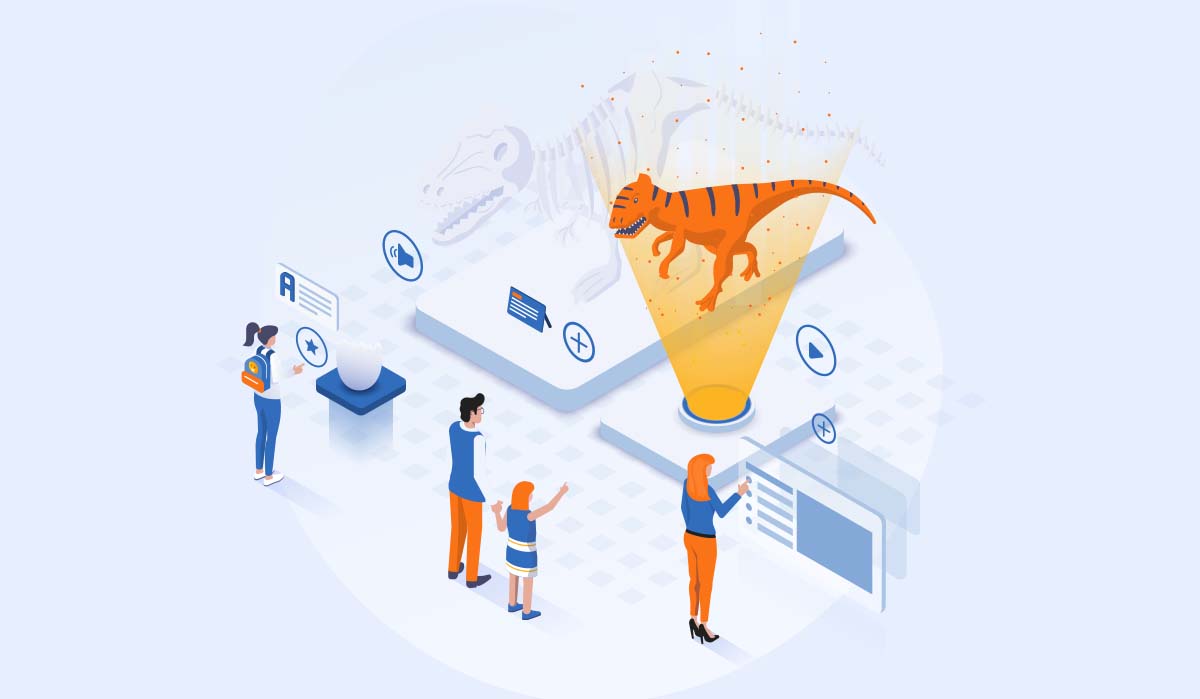
Augmented Reality is one of the buzzing new digital technologies used by several industries. Simply explained, augmented reality (AR) is a virtual augmentation of the physical world by adding digital elements, sounds, and other sensory stimuli.
AR uses mobile technology coupled with real-time data to generate visual graphics. This blended view offers a virtual glimpse of the systems that help operators and customers in different capacities. The best way to understand it is in product development. AR allows entrepreneurs to evaluate 3D virtual models of new products, which can be easily modified without having to develop a prototype.
Member-based organizations use this digital technology to enhance the attendees' experience during events. Managers can show potential visitors what to expect at the event by creating a virtual walk-through based on the previous event footage. Similarly, it can help them build a virtual brand experience for customers during product demos.
6. Big Data and Real-Time Analytics
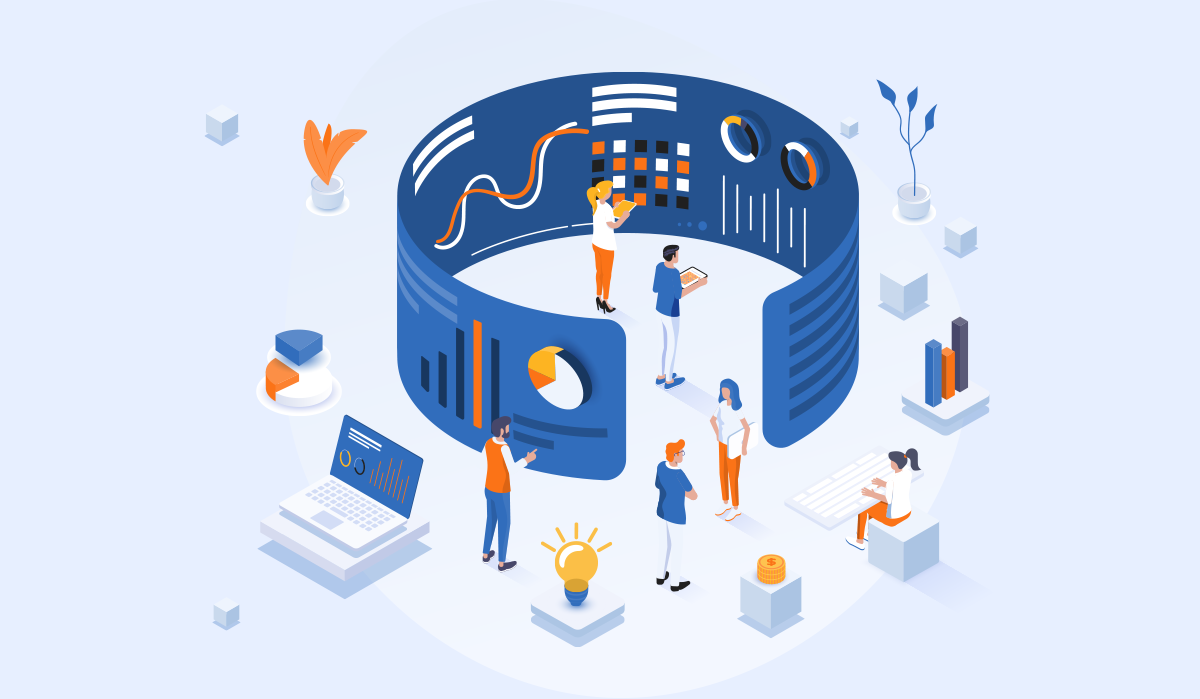
Big data analytics is an imperative digital technology that decodes complex data to reveal important information such as customer patterns (including their behavior and interests), market trends, and unknown correlations.
The size of big data can range from terabytes to zettabytes, and it can be structured, unstructured, or semi-structured. Due to the complexity of the data, traditional analysis methods cannot decode the information, which allows big data to provide real-time analysis to help make informed decisions.
The real-time analysis help membership organizations in several ways, which include:
- To gain new insights and take action, businesses can access and analyze large amounts of data from various sources.
- Large amounts of data can be stored and analyzed more efficiently with flexible data processing and storage tools.
- Create new products and services based on customer needs and potential risks.
7. Digital Twin
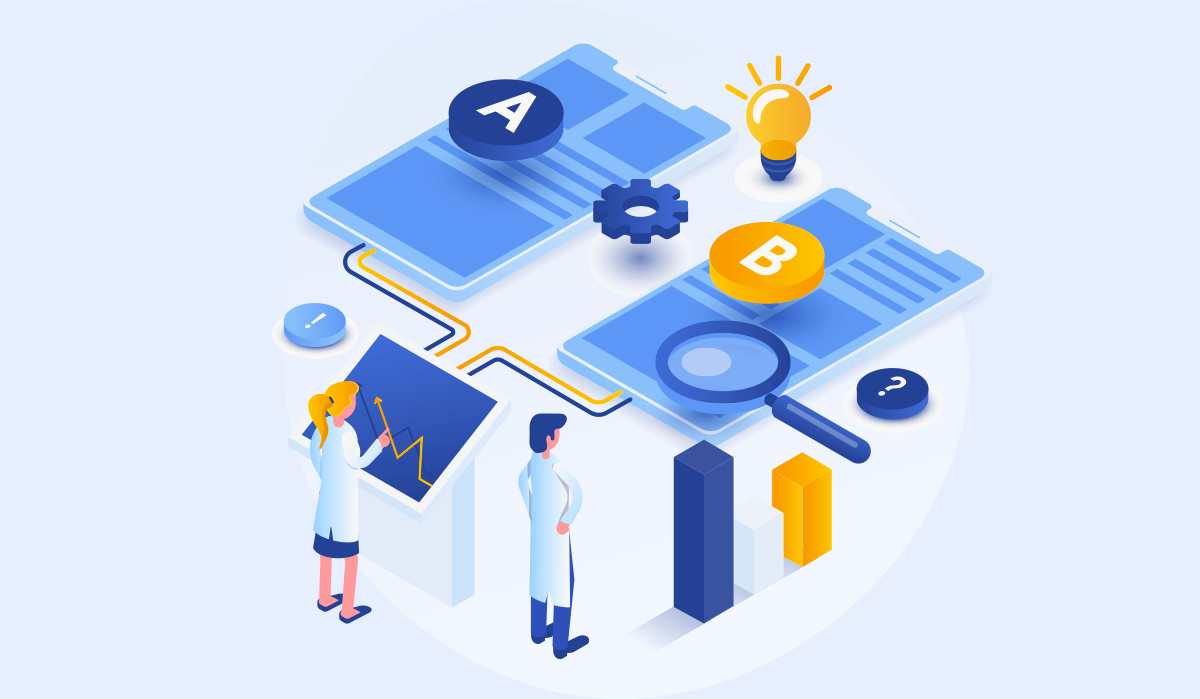
Digital Twin creates a virtual clone of a process or a service using 3D modeling. It is used to replicate processes that collect data from simulations to predict their performances. These can then be connected with other digital transformation technologies such as IoT, AI, and big data to drive innovation.
There are the four following types of digital twins, based on their functions:
- Component Twins: Clones of a small functioning part of the system.
- Asset Twins: They simulate the interactions between two or more components.
- Unit Twins: Replicates a unified system of multiple components working together.
- Process Twins: They are the digital clones of the entire operating system.
An enterprise may use more than one type of twin, depending on requirements. For member-based organizations, digital twins can enable data-driven insights, optimized membership journeys, increased member trust, and improved competitive position.
Additionally, it allows nonprofits to process information more efficiently, improve donor personas, boost volunteer participation, lower operating costs, and streamline processes.
8. API-Based Integrations
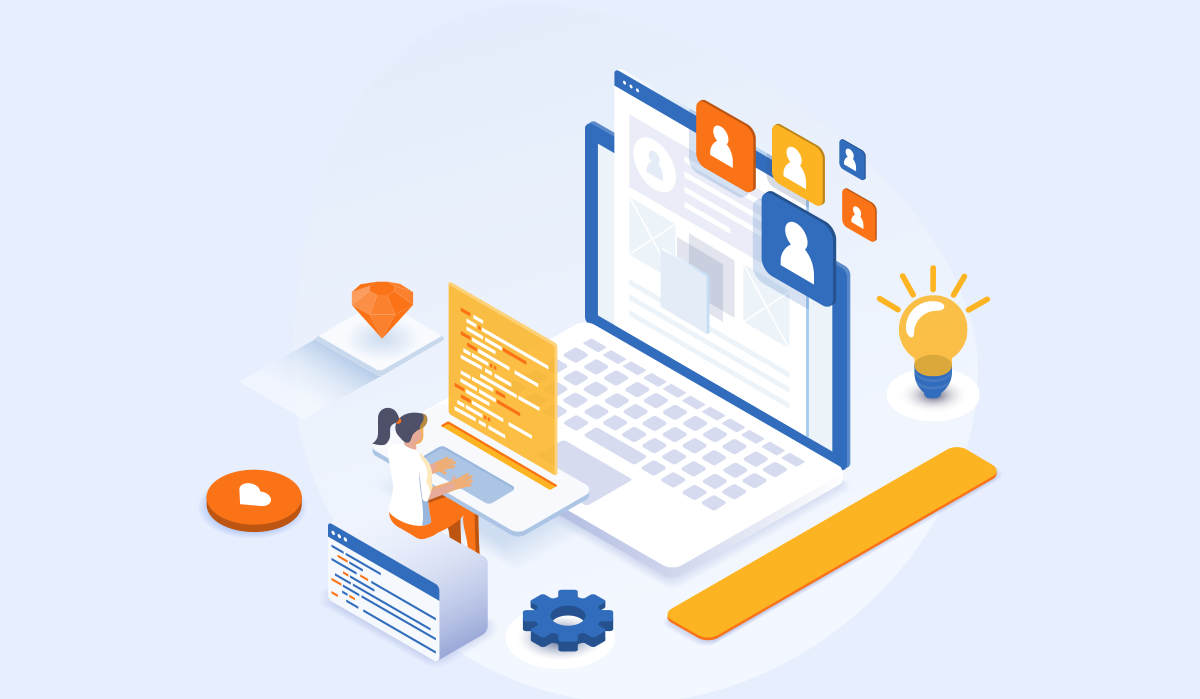
API integration is a powerful technology that is used by nearly all digital transformation platforms. It connects two or more systems through their APIs to allow a seamless data exchange between them.
When incorporated into a platform, It hosts a central hub where programs are saved based on their API. From there, it maintains a Dialog flow by detecting the intent requests and responding to them with the right API.
For instance, whenever a system tends to create or alter a service, the API-based integration finds the desired app from the vast database based on its API and integrates it into the service. Thus, it allows member-based organizations to create new services or features by choosing the right application from the unified system.
Membership organizations rely on API integrations to sync data, improve productivity, and boost revenue. Since it replaces several digital tools, it also enhances workflows, prevents system disruptions, and reduces overall costs.
9. Robotic Process Automation (RPA)
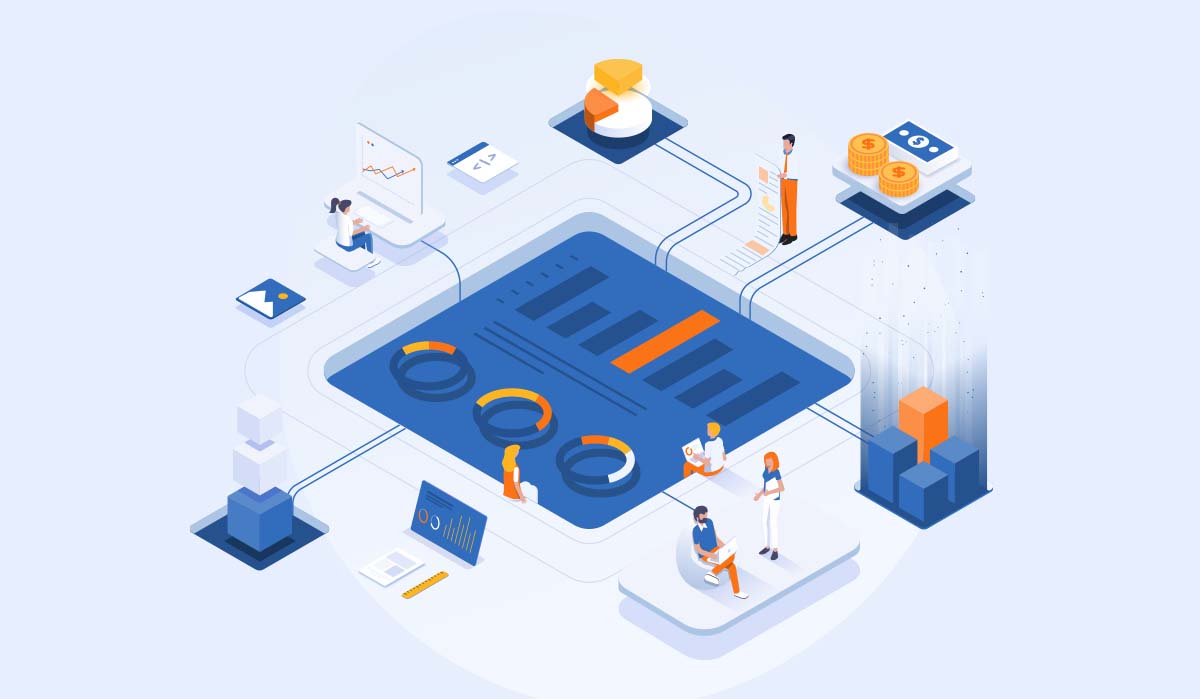
Robotic Process Automation (RPA) is the newest technology that uses bots, AI, and chatbots to automate manual tasks. It provides organizations with streamlined workflows, optimized outcomes, fewer errors, and robust system management to drive digital transformation.
There are endless uses of RPA in a member-based organization; however, they are mostly used for tasks with a potential for human error, such as maintaining invoicing, migrating data, and auditing data.
It works by simulating user actions ranging from simple clicks and copy-paste business operations to more complex workflows and billing activities. In advanced cases, they rebuild the entire workflow to allow faster and more precise operations, validation, and verification without the necessity to pause and verify.
Additionally, RPA consists of big-data analytics that enable organizations to gain real-time knowledge of their member patterns. Using this information, associations can improve their digital transformation strategies to become more successful and efficient.
10. Cloud-Based Technology
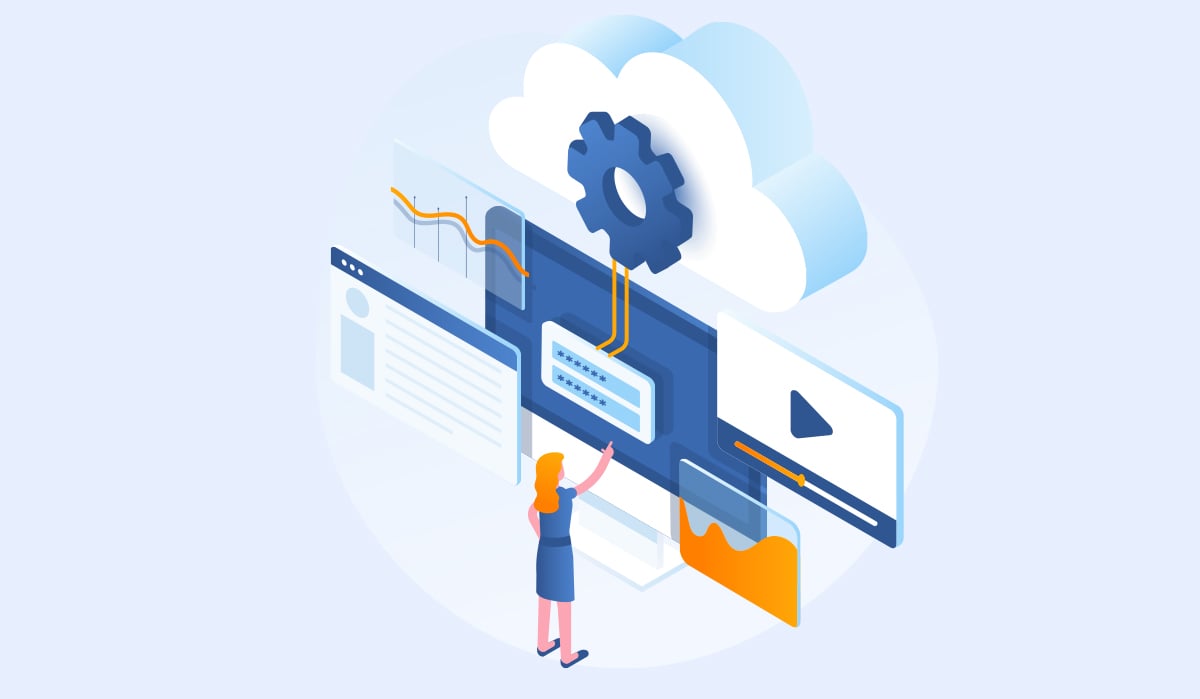
Cloud is an inevitable component in digital transformation that provides flexibility, scalability, and agility to organizations. Traditional storage services aren't adequate for handling large amounts of data cost-effectively and securely.
As a result, more industries are shifting to the cloud over time. The technology stores all the data in the cloud, freeing organizations from the hassles of downloading heavy files, finding IT experts, or manually updating their programs.
The best cloud technology for managing memberships is a SaaS (Software as a Service). Organizations that have members can take advantage of this technology to strengthen relationships, boost engagements, and automate tasks.
The best example here is Glue Up’s membership management software that enables professional communities to grow and thrive. The platform includes a powerful CRM that acts as an essential link between various modules, including memberships, events, campaigns, communities, and analytics.
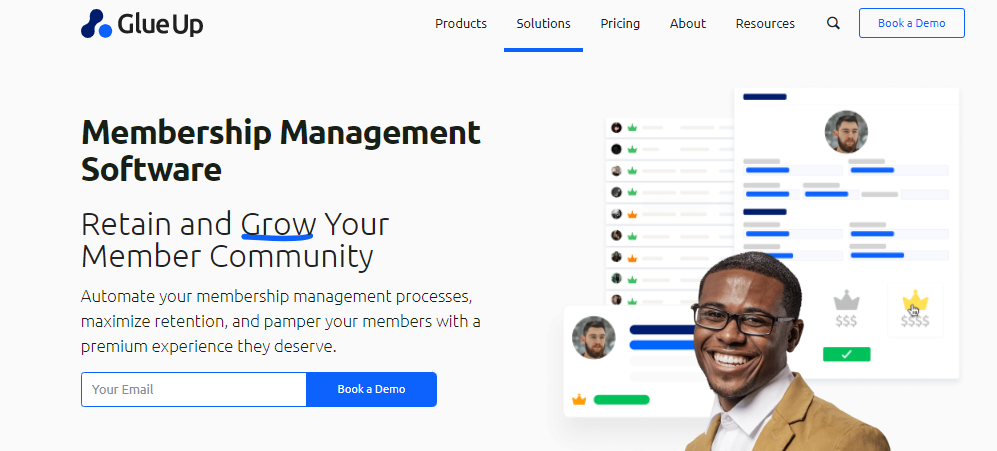
Organizations can use these modules to increase engagement with their members while remaining effective and flexible. From seamless membership management and collecting payments to fostering long-lasting communications, the ecosystem can automate all the membership processes.
Want to know how? Book a demo to get a virtual tour of the platform.
Examples of Successful Digital Transformation in Member-Based Organizations
Let’s take a look at some of the successful digitalization stories of member-based organizations using the right technology for their business operations.
IERCC Accelerating Digitalization Through Advanced CRM
The Inland Empire Regional Chamber of Commerce (IERCC) promotes business development throughout Riverside & San Bernardino counties, primarily supporting SMEs within the region. It helps executives in the Inland Empire to network, develop programs, and do business with each other.
A lack of consolidated data and a cumbersome back-end experience made it hard for the IERCC to manage its membership. Finally, they integrated with Glue Up’s cloud platform to simplify their back-end operations and bring all the necessary tools under one roof.
Since the platform is easy to use, the organization now spends more time strategizing how to engage and retain members. They are primarily focusing on thought leadership and exceptional membership experiences, all of which are managed and tracked using Glue Up's analytical and management tools.
FKCCI Doubling Member Growth using Cloud-Based Software
The Federation of Karnataka Chambers of Commerce and Industry (FKCCI) consists of prominent businessmen and industrialists, making it the premier organization for the industry, trade, and service sectors in the state.
FKCCI experienced exponential growth in memberships after integrating Glue Up’s CRM. FKCCI states that its membership growth was around 300 members per year before signing with Glue Up. In the two years since using Glue Up, it added 700 new members, doubling its growth.
FKCCI achieved this transformation with new engagement techniques, best-in-class marketing tools, and automated renewal processes delivered through the Glue Up platform. The online user engagement, integrated registration forms, email campaigns, and automated renewal reminders were the greatest drivers for membership growth.
Frequently Asked Questions (FAQs) about Digital Transformation Technologies
How does digital transformation differ from business transformation?
Digital transformation is a subset of business transformation. While business transformation refers to the change of overall business processes and strategies to meet new goals or demands, digital transformation specifically involves using digital technology to enable or accelerate these changes.
What are the key trends in digital transformation?
The key trends are a continuation of the 2021 digital transformation initiatives. In particular, the adoption of cloud technology is on the rise. Some other buzzing trends in 2022 include augmented reality, facial recognition, project mapping, and hyper-automation.
How can I measure ROI on digital transformation?
The simplest way to measure ROI on digital transformation is to divide the net profit by the investment cost.
ROI (%) = Net profit / Investment cost
The net profit here would be the expected revenue - the total cost of investment.
Note that digitalization is a time-taking process. It is, therefore, best to measure ROI after three years of investing in digital transformation tools and strategies.
What is the average cost of digital transformation projects?
The cost of digital transformation projects varies widely based on various factors, such as the company's size, industry, and the scope of transformation. However, a 2023 report found that the average cost for an enterprise was around $35.5 million. IDC predicted that the global spending on digital transformation initiatives would reach $5 billion in 2027.
What factors influence the total cost of digital transformation?
Several factors influence the total cost of digital transformation, including the existing technology infrastructure, integrations into existing workflows, size of the organization, existing digital skills gaps, and business goals. Each of these factors will determine the scope and cost of the transformation effort.
Why do some digital transformation projects fail or get significantly delayed?
Over 70% of enterprises in a report by Deloitte experienced failed or significantly delayed digital transformation projects. This is often due to the lack of adequate preparation, underestimation of costs, or not fully understanding the scope of the transformation. Scaling back these failed or delayed projects can cost companies an average of $5.5 million.
How can member-based organizations prepare for the cost of digital transformation?
Organizations can prepare for digital transformation costs by assessing their current state — workforce, technology stack, growth targets, product roadmap, and customer needs. This information can guide decision-making for future-proofing the organization. The specific requirements of the organization's transformation, whether it's workflow optimization or complete cloud migration, will also significantly influence the budget.
How does mobile technology contribute to digital transformation?
Mobile technology, which is widely available and already in use by most people, plays a significant role in digital transformation. It can enable remote working, help in tracking health data via wearable sensors, facilitate VoIP communications, and connect remote locations.
What role does 5G play in digital transformation?
5G offers ultra-fast data transmission with minimal latency, improving remote work and video calls. It is crucial in powering IoT devices and transferring large amounts of data quickly, which is vital in industries like manufacturing, healthcare, and logistics.
What is the Internet of Things (IoT) and how does it relate to digital transformation?
The Internet of Things (IoT) refers to various sensors, devices, and machines connected to the internet, facilitating real-time monitoring and control. IoT is an essential part of digital transformation, enabling businesses to gain insights from data collected from connected devices.
What is Big Data and how does it fit into a digital transformation strategy?
Big data refers to large volumes of raw data collected from various sources like IoT devices, social networks, and website trackers. This data, when processed and interpreted, can provide valuable insights to drive business strategies and is a significant component of digital transformation.
What is the role of artificial intelligence (AI) and machine learning in digital transformation?
AI and machine learning are powerful tools that can automate processes, analyze data, and make predictions. They can comb through big data, identify patterns, and generate insights, thus helping in decision-making and business strategy development.
What are digital twins and how are they useful in digital transformation?
Digital twins are digital replicas of physical systems, processes, or products. They allow businesses to simulate changes, predict outcomes, and optimize processes without risking real-world consequences. This can save resources, time, and money.
How do augmented reality (AR) and virtual reality (VR) fit into digital transformation?
AR and VR technologies create immersive 3D simulations that can be used in various business applications, like virtual product demos, remote collaboration, or virtual training. These technologies can enhance customer experience and improve business operations.
What is blockchain and how can it be used in digital transformation?
Blockchain is a digital ledger that securely records transactions across multiple computers. It can provide a reliable, verifiable record of contracts, approvals, and other data entries. In the context of digital transformation, it can enhance transparency, improve security, and automate various processes.
Why is cloud technology important in digital transformation?
Cloud technology is essential to digital transformation because it provides flexibility, scalability, and agility. Traditional infrastructure often falls short in these areas, making the cloud a vital component of most digital transformation initiatives.
What is the role of additive manufacturing and 3D printing in digital transformation?
Additive manufacturing (AM), also known as 3D printing, adds digital flexibility and efficiency to the manufacturing process. AM can create high-quality end-products with improved performance and more complex geometries than traditional manufacturing methods, contributing to the digitization of manufacturing processes.
What is API integration in digital transformation?
API integration is a method that connects two or more systems to facilitate smooth data transfer in digital transformation. Through API integration, an application can be located from a vast database and integrated into a service whenever a system tries to establish or modify a service. This aids in creating new services, increasing efficiency, and reducing costs.
How does API integration benefit member-based organizations?
API integration allows member-based organizations to sync data, enhance processes, prevent system disruptions, and reduce costs. It replaces multiple digital tools and offers a centralized platform for efficient service and feature development. Glue Up seamlessly integrates with a wide variety of other SaaS platforms, significantly expanding and enhancing its functionalities in new and innovative ways. For further details, we invite you to explore our API Integrations page.
What is Robotic Process Automation (RPA) in digital transformation?
RPA is a technology that uses chatbots, AI, and bots to automate manual processes. It mimics user actions and can execute simple tasks to complex workflows. RPA reduces human errors, offers faster workflows, and provides robust system management. It also includes big-data analytics to understand member trends and improve digital transformation plans.
How has the role of IT departments changed due to digital transformation?
Digital transformation has elevated the role of IT departments from service providers to key contributors to long-term corporate performance. IT teams are now responsible for implementing digital transformation frameworks that help innovative enterprises adapt and compete in the current economic landscape.
Why is it crucial to understand that digital transformation is not just an IT issue?
Digital transformation extends beyond IT to impact every aspect of a company. Without a broader business shift, digital transformation initiatives alone may not lead to significant success. Thus, finding areas where digitalization can positively impact a line of business is essential.
What is the problem with long-term digital transformation plans?
Long-term digital transformation plans may be too slow to respond to rapid changes in the market and threats from agile digital competitors. In a digital era, businesses need to be flexible and adaptable, necessitating more immediate, iterative strategies instead of multi-year plans.
What is the relationship between Agile and digital transformation?
Agile methodologies support rapid and adaptive digital transformation. Through decentralized decision-making, cross-organizational teams, and cross-team empowerment, Agile promotes a culture that enables swift implementation of digital transformation strategies.
How does digital transformation support hybrid infrastructure?
Digital transformation enables businesses to adopt a hybrid mix of remote and on-site working arrangements. Investments in digital transformation technologies can help develop a hybrid workplace that balances productivity and employer expectations.
What are the challenges of managing digital transformation technologies in a hybrid infrastructure?
Managing digital transformation technologies in a hybrid infrastructure is complex. While data shows that remote work can increase productivity, not all employers are comfortable with fully remote arrangements. Therefore, a productive compromise between remote and on-site work is necessary.
How can Glue Up help with the digital transformation of my member-based organization, and why is immediate investment in such technologies crucial?
As the future of work likely involves a blend of remote and on-site arrangements, continued investment in digital transformation technologies like Glue Up can help member-based organizations, especially Association, Chambers of Commerce and Nonprofits navigate this shift. Glue Up can support effective member communication, collaboration, and engagement in a hybrid business environment. Moreover, the mindset of members, customers, employees, partners, investors and stakeholders has changed, prompting a shift towards digital transformation. To remain competitive and improve the quality of work, organizations are focusing on digital-first experiences. To see Glue Up in action, click on the 'Get a demo' blue button located at the top right corner, and see how it can practically assist your member-based organization in improving its operations for the better.



